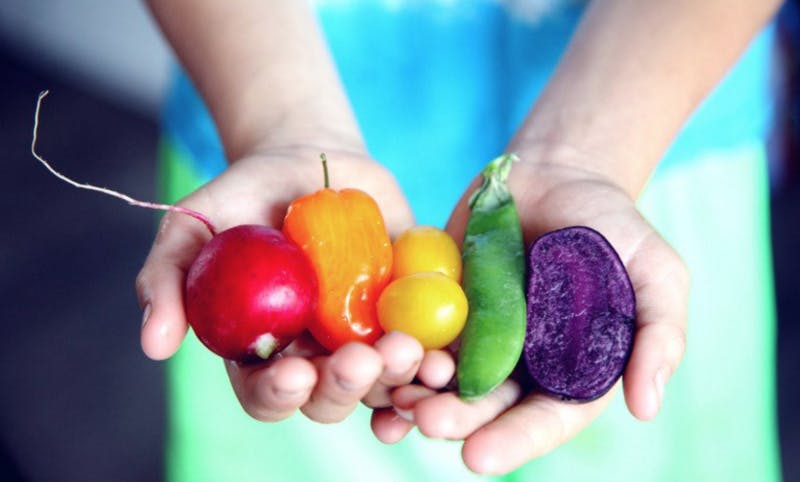
The Herbivore’s Whole30 Dilemma
By Danielle McAvoy
April 29, 2019
One of the most important rules of the Whole30 program is that there are no exceptions to the rules. Since the program was built on a foundation of omnivorism, two of the guiding principles are: eat all the animal proteins and cut the plant proteins. It feels a bit alienating, if not impossible for our vegetarian and vegan friends.
But Whole30 is one of the most successful dietary movements in history and the tales of transformation range from “whoa” to mind-blowingly epic. Everyone deserves the opportunity to seek the life-changing goodness a Whole30 can bring.
You’re not forgotten, plant-based friends. There are a couple ways to approach a vegetarian or vegan Whole30 without compromising your values.
For (Some) Vegetarians:
A true Whole30 is only an option if you’re ok with eggs and fish. Because most plant-based proteins are not allowed (like legumes or grains), it would be too challenging to get enough protein for 30 days without eggs or fish. Relying solely on the nuts and seeds that are allowed during a Whole30 would result in an imbalanced diet — too high in fat and too low in protein.
If seafood and eggs are ok for you, you can stick to the regular Whole30 program rules and get creative with your preparations of eggs and fish.
A couple of my favorite veggie Whole30 recipes that contain egg:
The Vegan Reset (for vegans):
If animal products are completely off the table, there is a vegan reset option. Like the Whole30, the vegan reset is designed to help reduce systemic inflammation and cravings, improve hormone balance and digestion, and ultimately teach you how the foods you eat affect your daily life.
The vegan reset makes an exception to the rules — which is why it can’t be considered a true Whole30 — and allows for select plant-based proteins. The following plant-based proteins are allowed because they’re likely to cause inflammation or disrupt any digestive reset:
soy tempeh, edamame, organic tofu, or beans/lentils
- Tempeh is fermented, which breaks down the lectins in soy that can cause inflammatory issues.
- Organic tofu is not fermented, a bit more processed, but still clean.
- Edamame and beans are virtually unprocessed.
Avoid ultra-processed soy, peanuts, and any food containing wheat or other non-compliant Whole30 ingredients.
Grains: quinoa is very gut-friendly and a good source of protein. Teff and amaranth are also gluten-free grains with a good amount of protein. Still avoid grains (and anything, for that matter) that contain gluten.
Allowing a couple of these plant-based proteins into your 30 day program is the best way for a vegan to simulate a true Whole30. Just remember to follow the rest of the Whole30 rules, such as no weighing yourself, no baked goods or treats even with compliant ingredients, and no sugar or alcohol.
Check out the official vegetarian/vegan Whole30 shopping list to help you find what’s approved.
A couple of my favorite vegan reset recipes:
And if meal planning or cooking just ain’t your thing, many of Territory’s vegetarian and vegan meals fit within the Whole30 or vegan reset. We’re here for you, always — no matter how you tackle your nutrition.
Popular Posts
Foods to Avoid When Taking GLP-1 Weight Loss Medications
April 25, 2025
Tips for GLP-1 Success: Healthy Habits to Practice on Weight Loss Medication
March 6, 2025
How to Go Gluten-Free: A Beginners Guide to Starting a Gluten-Free Diet
November 21, 2024
A Guide to Snacking on a Gluten-Free Diet
November 12, 2024